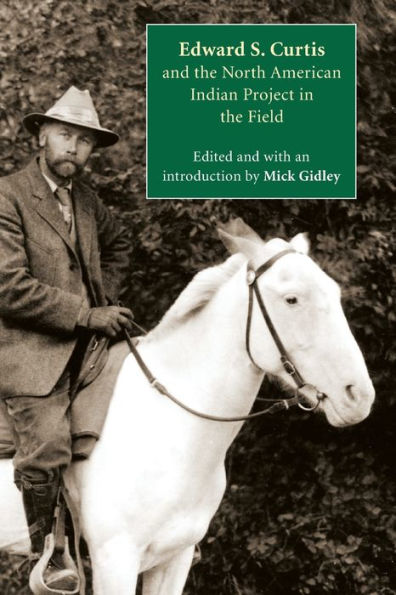Mick Gidley provides an intimate and informative glimpse of photographer Edward S. Curtis (1868-1952) and his associates as they embarked on their epic quest to document through word and picture the traditional cultures of Native Americans in the western United States--cultures that Curtis believed were inevitably doomed. Curtis's project in the early decades of the twentieth century became the largest anthropological enterprise ever undertaken in this country, yielding the monumental work The North American Indian. Its publication was a watershed in the anthropological study of Native Americans, inspiring the first feature-length documentary film, popular magazine articles, books for young readers, lectures, and photography exhibitions. Housing a wealth of ethnographic information yet steeped in nostalgia and predicated on the assumption that Native Americans were a "vanishing race," Curtis's work has been both influential and controversial, and its vision of Native Americans must still be reckoned with today. Gidley draws on reports and reflections by Curtis and the project's assistants, memoirs by Curtis family members, and eyewitness accounts by newspaper reporters in presenting an unprecedented look at anthropological fieldwork as it was commonly practiced during this period. He also examines the views of Curtis and his contemporaries concerning their enterprise and how both Native Americans and the mainstream American public perceived their efforts.
Mick Gidley is an emeritus professor of American literature and culture at the University of Leeds. He is the author of several books, including Edward S. Curtis and the North American Indian, Incorporated and Photography and the USA.
Mick Gidley provides an intimate and informative glimpse of photographer Edward S. Curtis (1868-1952) and his associates as they embarked on their epic quest to document through word and picture the traditional cultures of Native Americans in the western United States--cultures that Curtis believed were inevitably doomed. Curtis's project in the early decades of the twentieth century became the largest anthropological enterprise ever undertaken in this country, yielding the monumental work The North American Indian. Its publication was a watershed in the anthropological study of Native Americans, inspiring the first feature-length documentary film, popular magazine articles, books for young readers, lectures, and photography exhibitions. Housing a wealth of ethnographic information yet steeped in nostalgia and predicated on the assumption that Native Americans were a "vanishing race," Curtis's work has been both influential and controversial, and its vision of Native Americans must still be reckoned with today. Gidley draws on reports and reflections by Curtis and the project's assistants, memoirs by Curtis family members, and eyewitness accounts by newspaper reporters in presenting an unprecedented look at anthropological fieldwork as it was commonly practiced during this period. He also examines the views of Curtis and his contemporaries concerning their enterprise and how both Native Americans and the mainstream American public perceived their efforts.
Mick Gidley is an emeritus professor of American literature and culture at the University of Leeds. He is the author of several books, including Edward S. Curtis and the North American Indian, Incorporated and Photography and the USA.

Edward S. Curtis and the North American Indian Project in the Field
216
Edward S. Curtis and the North American Indian Project in the Field
216Paperback

Product Details
| ISBN-13: | 9780803234680 |
|---|---|
| Publisher: | Nebraska Paperback |
| Publication date: | 12/01/2010 |
| Pages: | 216 |
| Product dimensions: | 5.90(w) x 8.90(h) x 0.50(d) |
